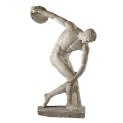RETURN
DOWNLOAD PDF
REAL TENNIS - EXAM QUESTIONS
EXAM QUESTION
1) Describe how five characteristics of Popular Recreation apply to the game of Real Tennis in Pre-Industrial Britain, and how social class influenced participation.
Characteristics
a) Violent/cruel: Real Tennis was neither: it was sophisticated, respectable and civilised
b) Rural: It was played in rural and urban settings, but only in the grounds of large houses/estates owned by the Upper Classes
c) Occupational: it wasn’t a sport that attracted people of any particular profession, as the Upper Classes played. It is possible that professional coaches (who would be lower class) would emerge but that is only speculation.
d) Simple + Natural: far from it – Real Tennis was played in a purpose-built (and expensive/spacious) facility that only the very rich could afford, unlike Popular Recreations for the Lower Classes who used the natural facilities around them such as fields, rivers, and the sides of buildings (for bat + ball games)
e) Local: The Upper Classes couldn’t travel far to play on any particular day, as transport didn’t exist, but they might end up playing when they visited others in their Stately homes, or when they went abroad (King Henry VIII developed a love for the game when travelling in Europe)
f) Wagering: The spectators galleries around a real tennis court made it possible for betting to occur, where courtiers/visitors/spectators would make bets on the outcome.
g) Simple, Unwritten rules: far from it, the games of Real Tennis had a sophisticated set of rules that were written down: the upper classes who played were literate, unlike the lower classes for whom simple rules were just passed on by word of mouth.
Social Class (3 marks)
h) Courtly/Popular: The game was played by Royalty and some of the Upper Classes who could afford to have the expensive, purpose-built facilities in the grounds of their large houses
i) The Upper classes had the time to play regularly whereas the Lower Classes didn’t.
j) The game was sophisticated and not basic/simple as in the popular recreations of the Lower Classes: the upper classes liked games that reflected their background and status.
k) The game required a high level of skill, whereas Lower Class games usually just needed force.
l) It was an elite sport that was exclusive to the Upper Classes who would want to ensure that they didn’t mix with people of lower social status
m) There was a dress code, and etiquette (manners/standards) that went hand in hand with the culture of the rich, something not followed or understood by the Lower classes.
n) The lower classes played their own simple, adapted versions of tennis, perhaps bat and ball against a wall or just in a field.


